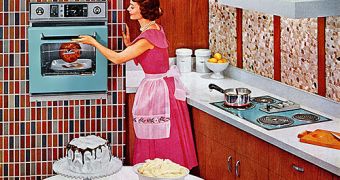A new Notre Dame study shows that starting with the 1960s, the number of married women going to work increased dramatically, and this is mainly due to washers, dryers, freezers and all other household appliances.
Steven Lugauer is a Notre Dame economist, who carried out this study, and he says that “liberating” women from housework and propelling them into the workforce could not be the entire story.
The researcher talked about a book entitled “More Work for Mother”, based on a famous economic study conducted in the 1980s on household appliances, and said that the “accepted wisdom had been that appliances in the house actually cause women to work more inside the home rather than liberating them to work outside the home.
His study showed that this idea was completely false, and in order to explain it, he used the analogy of advances in the transportation industry over the last century:
“Air travel has become easier, car travel has become easier.
“We don’t spend less time traveling, we just travel to more places that are farther away,” he said.
He believes that the same could be said for appliances and their effect on a household – women do not necessarily spend less time on household chores because of appliances, but the fact that they own these appliances makes life better and easier.
This way, the family has cleaner clothes and the meals are made more efficiently.
Lugauer and his colleagues used data from US census from 1960 and 1970, and analyzed the relationship between married women owning household appliances and their chances of entering the workforce.
He explains that between 1960 and 1970, both the rates of women workforce and households' ownership of appliances rose dramatically – the numbers of working married women increased from 33% to 43%, and the number of households owning washers, dryers and freezers increased from 11% to 28%.
An interesting fact is that the number of single women working did not change much from 1960 to 1970.
“It’s not clear that women spend less time in the home just because the technology has gotten better,” said Lugauer.
His research was published recently in Labour Economics.
Lugauer presents his research:

 14 DAY TRIAL //
14 DAY TRIAL //